IAC News
IAC News No.111, January 13 2022
Japan Society of Civil Engineers International Activities Center January 13, 2022 IAC News No.111
New Year Wishes and Message:
“Revitalization of Japan and the Role of JSCE after the COVID-19 Pandemic”
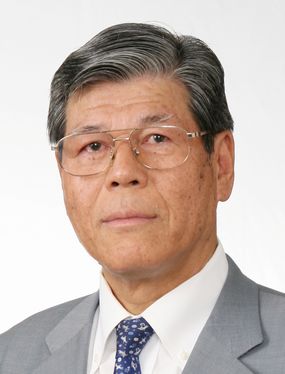 Hiroaki Taniguchi
Hiroaki Taniguchi
109th JSCE President
Happy New Year.
I would like to express my gratitude to our members and stakeholders both inside and outside the organization for their relentless hard work in supporting the efforts of JSCE. While the novel coronavirus that first made headlines the year before last has escalated into a pandemic, I feel that we can now begin to see the light at the end of the tunnel thanks to progress made with the development and deployment of a vaccine. I would like to express my gratitude to those who have continued to undertake the necessary projects while taking appropriate measures as an essential worker during this time.
For the time being, priority will be given to helping those that have suffered tremendously due to the pandemic and ensuring all contingency measures are in place in the event a similar spread of infection occurs later down the line. To eliminate the public’s anxiety toward the future, it is essential that we paint a vision to revitalize Japan from a lifestyle, economic, and social perspective and systematically implement strategic and effective policies. In undertaking this challenge, the role of civil engineering, which is responsible for the infrastructure that supports our lifestyles, the economy, and society, is enormous, and thus I think that we should aim to be an “Open and Attractive JSCE” and play an appropriate role in bringing to life the vision of revitalizing Japan.
We find ourselves in a time of major changes such as the declining birthrate and aging population, declining population, advancements in globalization, IT, and DX, as well as increasingly severe global warming and energy issues. The issues of globalization and global warming will cause us to shift from taking a ‘my country-first approach’ to working together on a global front. Meanwhile, the pandemic will push us to become a country that distributes risks evenly to balance the economy and livelihoods of its citizens and ease the concentration on the major cities. It is important that we not only try to forecast the future from as things currently stand, but that we also improve future literacy and paint a picture of our ideal future. In civil engineering as well, we are required to take another look in the mirror in line with present changes in business and consumerism accompanied with the shift in emphasis from quantity and goods to quality and experience and the shift from uniformity to diversity, as well as respect for the ideas of social common capital and green infrastructure that integrate conventional infrastructure with nature.
Japan is a vulnerable country where disasters occur frequently. There are some experts who say that there is a high probability that a huge earthquake will occur here in the near future, and so there is an urgent need to accelerate national resilience such as in the areas of disaster prevention and mitigation. Furthermore, we must maintain and update our infrastructure and develop a sustainable growth infrastructure that gives us aspirations and hopes for the future. In order to rebuild a sustainable lifestyle, economy, and society, it is now that we must promote global communication and friendships and formulate and announce a strategic and future-oriented long-term plan for infrastructure. Based on dialogue with members of the public at the President’s Special Committee, I plan to compile and propose “The Big Picture of Revitalization and Civil Engineering in Japan after the COVID-19 Pandemic” by June this year.
I would like to end this New Year’s message by asking for your continued cooperation and support and by wishing all our stakeholders and everyone at JSCE a very happy 2022.
The 5th JSCE Construction Site Tour in Kyoto
The International Student Network Group holds construction site tours and company information sessions for international students to make those studying in Japan aware of Japan’s cutting-edge civil engineering technology and to provide information on companies in the civil engineering sector. In the Kansai region to date, construction site tours and company information sessions had been held on the same day, and since the first event in December 2014, it has been held on a further two occasions back in January 2016 and November 2017.
This fiscal year, the event was at risk of being canceled due to the COVID-19 pandemic, but there were positive signs when the state of emergency was lifted. Thankfully, The 5th JSCE Construction Site Tour went ahead on November 12, 2021. With the recent widespread adoption of online conference platforms, it is no longer necessary to hold company information sessions in person in the Kansai region, which is why we decided to hold only the construction site tour on this occasion.
As part of this year’s construction site tour, with the cooperation of West Nippon Expressway Company Limited (NEXCO-West), we visited the site of the tunnel and viaduct in the Otsu-Joyo section of the Shin-Meishin Expressway. A total of 10 international students from 4 universities in the Kansai region (Kyoto University, Osaka University, Kobe University, Kansai University) attended the tour.
After meeting up at Kyoto Station, we all boarded one of the two rental buses and headed for the first stop on the tour, the Ujitawara Tunnel. At the construction site, a representative of explained about the NATM (New Austrian Tunneling Method) excavation method and the AGF (All Ground Fastening: a method for forepoling steel pipes through an embankment) method that are used in unison when the ground is soft, loose, or caves easily. The international students fired questions about the specific difference between blasting done using an excavator and blasting done using dynamite. Many attendees had never seen a tunnel face in the flesh, and the sight of the students eagerly snapping away with their cameras sticks out in my mind.
We then moved to the other side of the tunnel and observed the viaduct under construction by way of the cantilever construction method. With regards to various structural and load conditions during construction, the attendees seemed to be particularly interested in the design and construction methods that are typical in Japan, a country where earthquakes occur frequently, such as comparing the safety of constructions against level 2 (L2) earthquake motions. After that, at Joyo Junction, we visited the construction site of the viaduct that leads to the section that is in service. We were allowed to actually climb up on the bridge girders and we were told about the unique characteristics brought about due to the difference in the construction method of the decking. One international student remarked, “Activities both at and outside my university were restricted due to the COVID-19 pandemic, so I have learned a lot from being able to observe these tunnel and viaduct construction sites.”
I would like to take this opportunity to say a big thank you to Mr. Fujii, Mr. Oguni, Mr. Hiasa, and Mr. Furukawa NEXCO-West for their hard work in helping us to hold this event under the extremely tough circumstances of the COVID-19 pandemic.
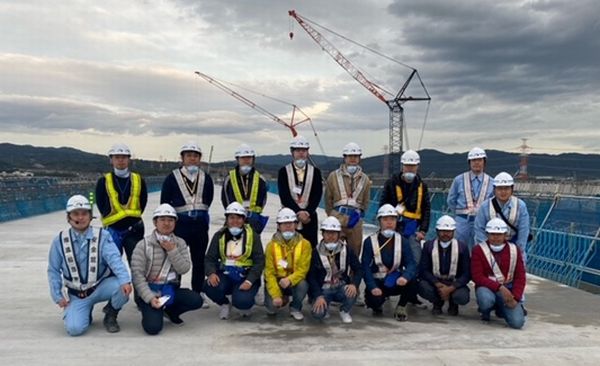
On the Joyo Viaduct
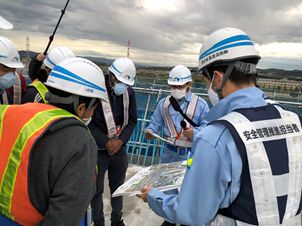
Attendees Listening Attentively
【Reported by Yasuo Sawamura, International Student Network Group, IAC (Kyoto University)】
JSCE Annual Meeting Research Discussion Session by the ACECC-TC21 Support Committee
At TC21, the 21st technical committee of the Asian Civil Engineering Coordinating Council (ACECC), we believe that a transdisciplinary approach (TDA) is a breakthrough initiative for building resilience against disasters, and so through case studies and symposiums, we have organized and shared the need and benefits of TDA. The achievements of the first phase (2016-2019) were reported at CECAR8 (The 8th Civil Engineering Conference in Asian Region) held in Tokyo in April 2019, and a report was released in a book format (Activity Report (2016-2019) ISBN: 978-4-8106-1014-7 (http://www.acecc-world.org/TC21/).
At this year’s Research Discussion Session at the JSCE Annual Meeting, TC21 held a special session entitled: “How COVID-19 affected Trans-disciplinary Approach (TDA) and Decision making on Building Disaster Resilience?”※ In this session, six panelists from academic societies belonging to ACECC were invited online to report on the latest disaster response and disaster mitigation measures under the COVID-19 pandemic. Attendees then discussed the vision for TDA in terms of disaster resilience in the age of the ‘new normal’. Through presentations by the panelists and subsequent panel discussions, three characteristics were presented and shared. Firstly, some cases illustrates that outbreak of COVID-19 had sparked a crisis management department to tackle the two-compound disaster of a natural disaster and the novel coronavirus pandemic in collaboration with other departments. Secondly, it was commented that the trust and confidence of the public based on the proper communication and sharing of information was important for promoting cooperation between the government, industry and academia. Thirdly, there were cases where ICT technology was actively used in tracing apps and portal sites to help tackle COVID-19. In addition, there were examples where new, pandemic-triggered initiatives are underway in the fields of civil engineering and disaster mitigation. In Nepal, for example, a system that enables users to remotely report, check, and instruct construction site work has been introduced.
TC21 will also hold a special session at CECAR9 (the 9th Civil Engineering Conference in Asian Region) that will be held in Goa, India in September 2022, and while reporting its achievements based on its activities in the 1st and 2nd phases, TC21 continues to engage in efforts to promote TDA on building disaster resilience. I hope that we continue to receive advice and cooperation from a broad range of people.
※A recording of the session can be accessed here: https://www.youtube.com/watch?v=_Rf05oGNeuI.
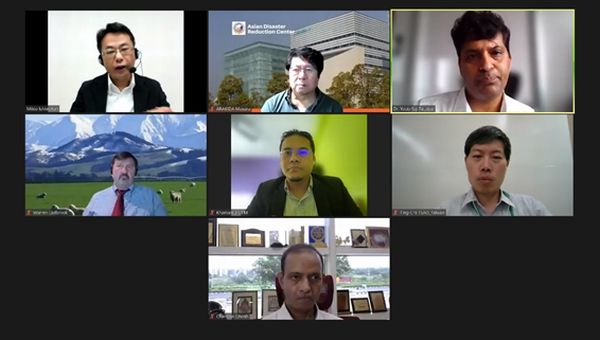
Chair Mikio Ishiwatari (TC21 Co-Chair: upper left in the photo) and Panelists
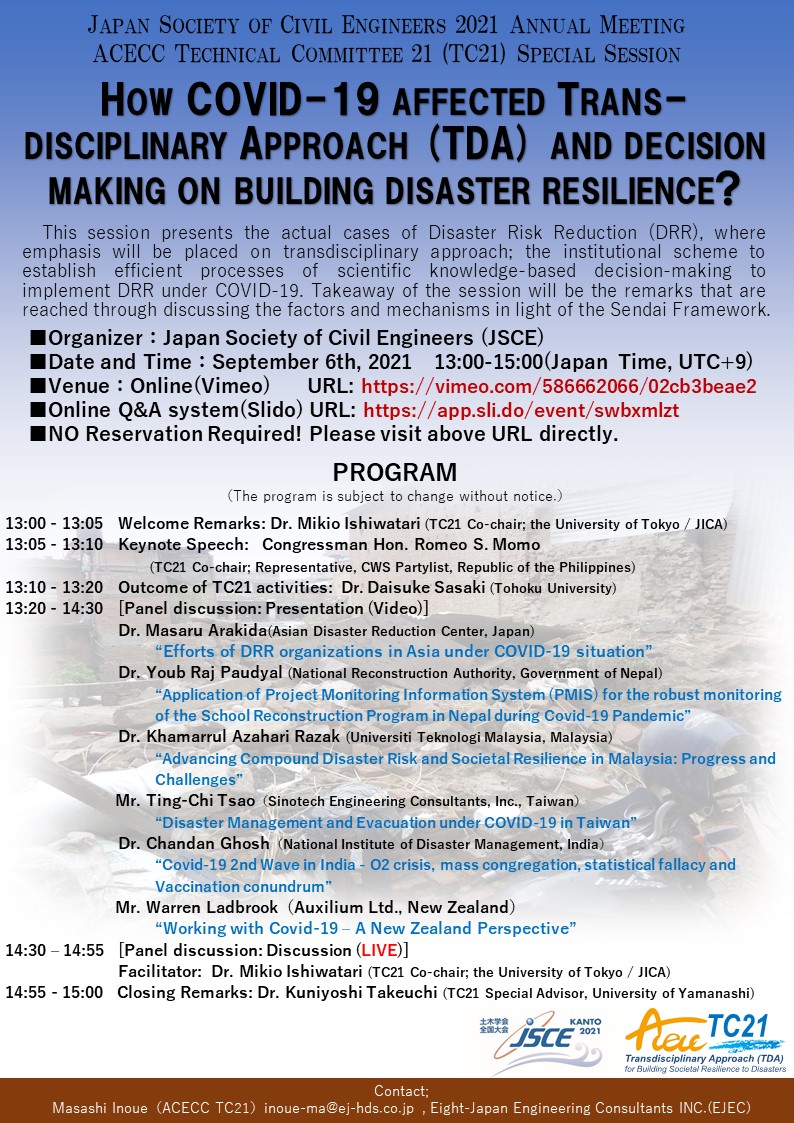
【Reported by Masashi Inoue, Secretary-General of the ACECC TC21 Support Committee, JSCE (Eight-Japan Engineering Consultants Inc.)】
JSCE- Faculty of Engineering, Kasetsart University Joint Seminar (Online)
“Current situation regarding concrete structures under chloride attack in Thailand and Japan, and effective maintenance technologies”
This joint seminar, cosponsored by the Concrete Committee of the Japan Society of Civil Engineers (JSCE) and the Faculty of Engineering, Kasetsart University (KU), was held on September 28th, 2021. It was a response to the increasing infrastructure maintenance burden in the ASEAN economic community, especially in Thailand, where chloride attack is causing exceptional levels of concrete infrastructure deterioration. As a first step toward matching needs and deployment of technology for preventing chloride attack, the seminar was an opportunity to share information about the current state of infrastructure and the maintenance techniques deployed in Japan and Thailand. This was the second online seminar on the topic, following one last year.
Six leading experts and researchers, including a road administrator and contractor, were invited to speak. The opening remarks were given by Dr. Ooshima, chair of the Sub-committee on International Affairs of the JSCE Concrete Committee (Photo 1). He discussed the history of concrete structure maintenance in Japan and the significance of proper control of structures throughout the design, construction, and maintenance processes.
In the first session, Dr. Koike of Kagoshima University gave a presentation on concrete durability in port and harbor facilities and how it can be enhanced, while Dr. Wanchai of Kasetsart University talked about techniques for predicting the chloride content of concrete and also explained Thailand’s maintenance specifications (Photo 2). In the second session, Dr. Makita of NEXCO Central offered a presentation about maintenance techniques for road structures in Japan, Dr. Skit of DOH described the current state of infrastructure in Thailand, Mr. Kobayashi of Kajima Corporation introduced a technique for enhancing concrete durability using a water-repellent agent, and Dr. Chawis of CPAC SB&M explained current the infrastructure maintenance methodology in Thailand, respectively.
In the Q&A session that followed, many participants asked questions ranging from practical issues, such as the applicability and economic performance of particular maintenance techniques, to research questions. At the end of the proceedings, closing remarks were given by Dr. Wancai of Kasetsart University, in which he commented that the presentations were fruitful and would help maintain the infrastructure of both countries in a safe condition, and the seminar ended on a high note.
Over 100 people participated, and the nationality of those pre-registering for the seminar was as follows: approximately 20% from Indonesia and Japan, 10% from Thailand, Myanmar and the Philippines, and the remainder from over 30 countries including Bangladesh, Vietnam, China, Hong Kong, Pakistan and India. This spread of nationalities illustrates the advantage of holding such seminars online.
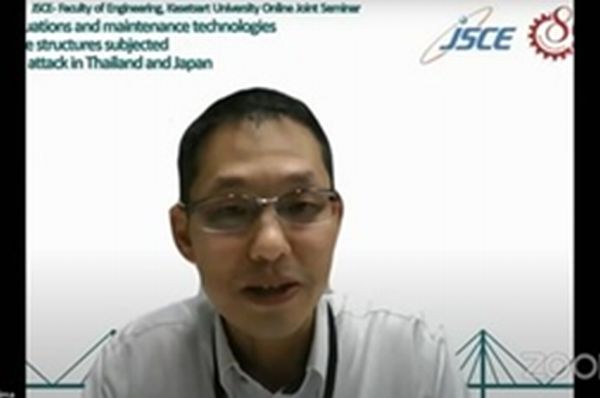
Photo 1 Dr. Yoshinobu Ooshima Gives Opening Remarks

Photo 2 Prof. Wanchai Yodsudjai Gives Closing Remarks
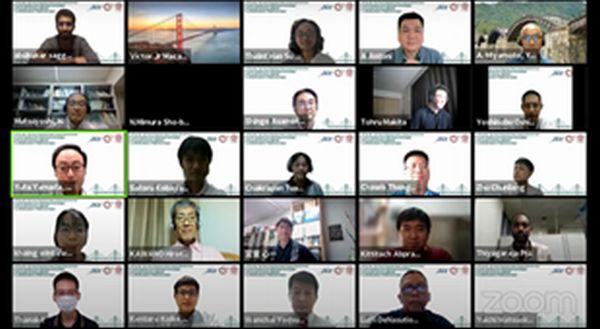
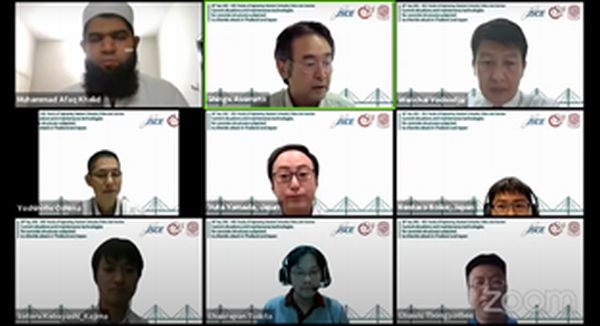
Participants
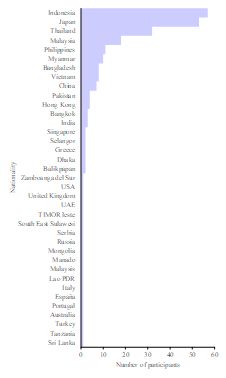
Breakdown of Participants
Speakers and Their Presentation Titles
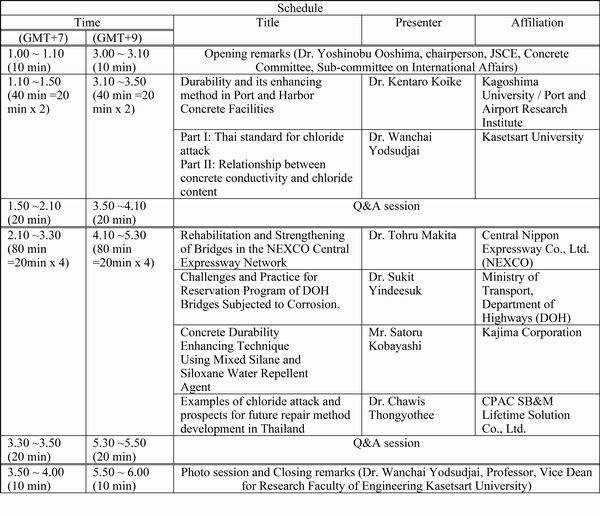
This symposium is supported by International Scientific Exchange Fund.
【Reported by Yoshinobu Ooshima, Chair of the Sub-committee on International Affairs, JSCE Concrete Committee】
Updates
- The 8th Civil Engineer’s Lounge “DOBOKU” (January 27, 2022)
- The 5th Seminar on the Internationalization of Technical Standards (March 8, 2022) https://committees.jsce.or.jp/kokusai/node/255
- 【YouTube Video】
JSCE Construction Site Tour for International Students
https://youtu.be/oC7TLdR_7YYFY2021 Int'l Roundtable Meeting “Changing Society and Future Infrastructure”
・English: https://www.youtube.com/watch?v=LDrr5zqJ4c8
・Japanese: https://youtu.be/0A5ScjsHwKoJapan Construction International Award:
Japanese Quality Infrastructure Surprises Samurai, Ninja and Geisha
https://youtu.be/gZBQe5IqAyw - 3rd JSCE Concrete Committee Webinar "Frontiers of Concrete Technology"
https://www.jsce-int.org/node/745 - Japan's Infrastructure Grades 2020 & Introduction of Maintenance Technologies
https://www.jsce-int.org/node/733 - Civil Engineering Design Prize, JSCE
http://design-prize.sakura.ne.jp/ - Japan Construction International Award
https://www.mlit.go.jp/JCIA/en/ - The 9th International Conference on Flood Management (ICFM9)
https://www.icfm9.jp/index.html - European Council of Civil Engineers E-Journal
http://www.ecceengineers.eu/newsletter/Files/ECCE-E-journal-23.pdf?m=1640190118& - American Society of Civil Engineers(ASCE)
・ASCE Lifeline Conference 2021 2022
Dates updated: Jan 31-Feb 4, 2022
https://samueli.ucla.edu/lifelines2021/
・Joint Japan-US Symposium on Assessment, Management, and Governance for Infrastructure Resilience
*Pre-recorded Presentation Available on the Website.
https://www.infraresil.jp/event/01/ - The International Infrastructure Archives
– A Compilation of Japan’s Greatest Projects in Transfer of Civil Engineering Technology in Service –
http://www.jsce.or.jp/e/archive/ - IAC “News Pick Up!!” on the JSCE Japanese website
https://committees.jsce.or.jp/kokusai/iac_dayori_2021 - Summary of featured articles in JSCE Magazine Vol. 107, No.1, January 2022
http://www.jsce-int.org/pub/magazine - Journal of JSCE
https://www.jstage.jst.go.jp/browse/journalofjsce
IAC News Subscription
The IAC News is one of the communication tools to share information and ideas with the members. We would like to invite you, your friends and colleagues to join the communication and to subscribe the IAC News. Please register online: (http://www.jsce-int.org/node/150). We look forward to meeting you.
